Introduction: In this article, Gena Philibert-Ortega shows how you can research your female ancestor by searching old newspapers for articles about the Woman’s Christian Temperance Union. Gena is a genealogist and author of the book “From the Family Kitchen.”
Having trouble learning about the lives of your female ancestors? A good place to find their stories is an online collection of old newspapers, such as GenealogyBank’s Historical Newspaper Archives. Go beyond the obvious articles (birth notices, wedding announcements, obituaries) to find stories about the lives they led, causes they cared about, events they participated in, and groups they supported.
For example, what groups did 19th century women belong to? Their memberships most likely included organizations whose missions they were passionate about. One group that consisted of women who disavowed alcohol was the Woman’s Christian Temperance Union (WCTU), founded in 1873.
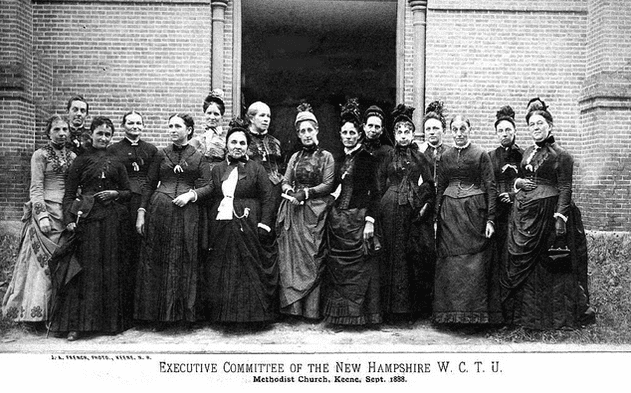
According to the Woman’s Christian Temperance Union website, the group:
was organized by women who were concerned about the destructive power of alcohol and the problems it was causing their families and society.
Member activities included trying to convince saloon owners to voluntarily close their doors. According to their website, the WCTU is today “the oldest voluntary, non-sectarian woman’s organization in continuous existence in the world.”*
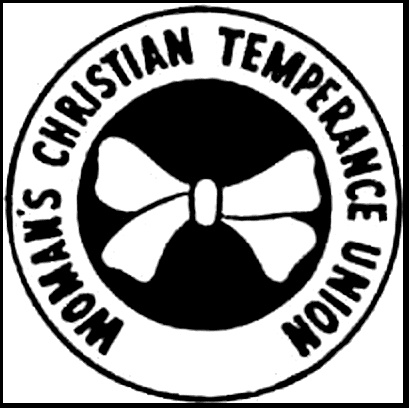
Their most well-known leader was their second national president, Frances E. Willard, who led the organization for 19 years (1879-1898). She joined the WCTU shortly after its founding and during her tenure promoted other causes that impacted women such as suffrage, equal pay for equal work, and the eight hour work day.**
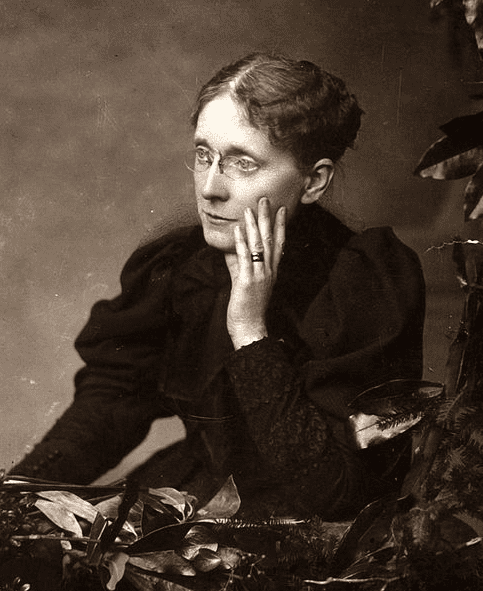
Frances Willard was famous in her day, well-known to all, and so looked up to that a statue in her likeness was presented to Statuary Hall at the U.S. Capitol by Illinois in 1905. Hers was the first likeness of a woman displayed in the Hall.
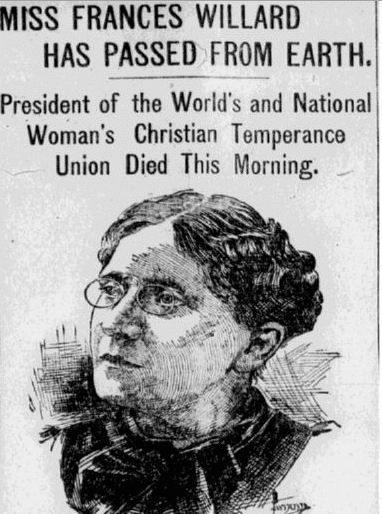
The Frances Willard House and Museum in Evanston, Illinois, includes a library and archive with items of interest to genealogists.
The 19th and 20th century WCTU did more than just try to convince saloon owners to stop selling alcohol and men to stop drinking. Some of their efforts are still visible today.
Drinking Fountains
One of the first orders of business for the WCTU was to encourage the installation of drinking fountains in cities across the United States. It was thought that these fountains would provide clean water for everyone and give men a place to get a drink of water – thus avoiding the local saloon.
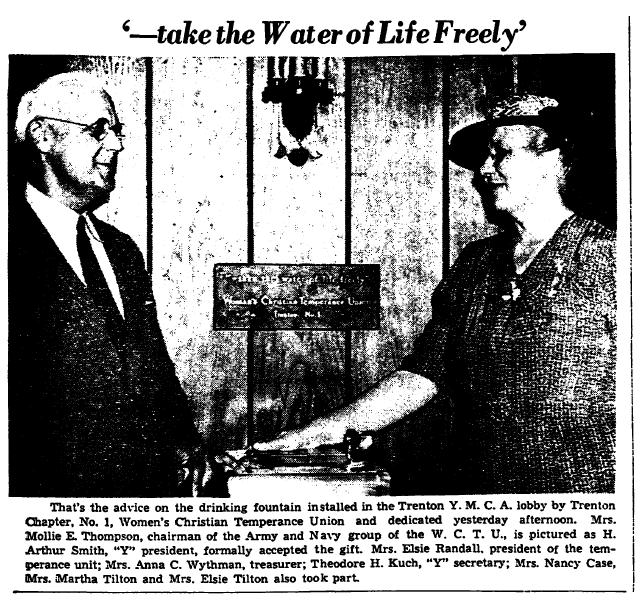
Some of these fountains still exist. A list of currently known fountains is found on the WCTU website.
Polygamy
As mentioned previously, temperance wasn’t the only issue the WCTU was passionate about. The WCTU lent their voices to other social ills they believed victimized women. They joined with other Protestant women to speak against the Mormon practice of polygamy. WCTU’s leader Frances Willard even wrote the introduction to the anti-polygamy tome The Women of Mormonism; or The Story of Polygamy as Told by the Victims Themselves by Jennie Anderson Froiseth (1882). It’s clear what the WCTU leader thought about this “twin relic of barbarism” when she writes:
surely it is time that the Christian women of this nation arouse themselves to organized action against this sum of all curses…***
Although the Mormon Church’s sanctioning of the practice of polygamy ended in 1890, the WCTU was still speaking against polygamy in the early 20th century. This 1906 Massachusetts newspaper article reports on a meeting of the WCTU:
As a result of one of the most startling anti-Mormon addresses ever heard in Boston, the delegates to the World’s convention of the W.C.T.U., assembled in Tremont Temple yesterday afternoon, unanimously passed a resolution placing that body on record to employ every means in its power to force the adoption of an anti-polygamy amendment to the Constitution of the United States.
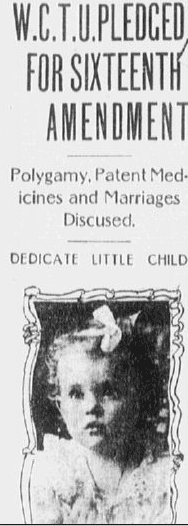
Was Your Ancestor a Teetotaler?
Your 19th and early 20th century Christian female ancestors may have taken up the cause of prohibition. Their devotion to this cause may have included membership in the Woman’s Christian Temperance Union – but how do you learn more? The first place to look is their local newspapers. Newspapers listed WCTU events, and members elected to offices and committees – reports in which you may find your ancestors’ names. In some cases, their obituaries may also include mention of their membership in the WCTU, such as this example of Martha Sprague’s obituary in a 1916 New York newspaper.
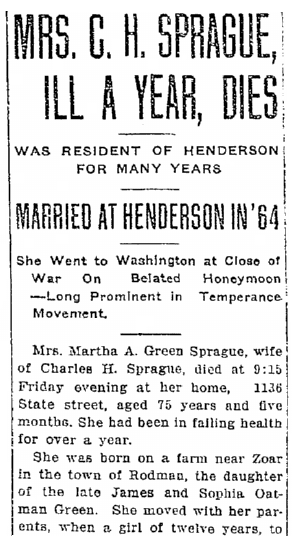
Genealogy Tip: Don’t forget to search for your married female ancestor by her husband’s name, such as in the above example, where Martha Sprague is identified in the headline as “Mrs. C. H. Sprague” (her husband was Charles H. Sprague).
In this article from an 1874 Indiana newspaper, several different WCTU group members are mentioned.
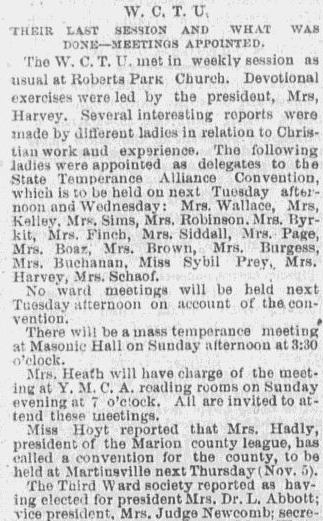
Other Resources
A search on ArchiveGrid, an archival collection catalog, can also help you track down your female ancestors who belonged to the WCTU. Use the keyword WCTU to find relevant collections. To get the most of your search, consult their How to Search page.
Another good genealogy resource is community cookbooks. The WCTU used cookbooks to raise funds for their activities, as did other women’s organizations. You can find these cookbooks on digitized book websites like Google Books, and in library and archive collections.
The WCTU Today
The Woman’s Christian Temperance Union is still in existence and continues to be dedicated to issues that affect families, such as substance abuse. You can learn more at the Woman’s Christian Temperance Union website. Their website also includes links to some affiliate chapters. In the case of the California chapter, an archive page contains images and a history of the WCTU in Southern California.
Was your ancestor a member of the WCTU? Add to her life story by documenting her membership and the events she was a part of, as preserved in GenealogyBank’s Historical Newspaper Archives.
————————-
* The Women’s Christian Temperance Union. http://www.wctu.org/. Accessed 16 June 2015.
** Women’s Christian Temperance Union. Frances Willard. http://www.wctu.org/frances_willard.html. Accessed 18 June 2015.
*** Froiseth, Jennie A. The Women of Mormonism, Or, the Story of Polygamy As Told by the Victims Themselves. Chicago: Bryan Bros. Pub. Co, 1883. Available on Google Books.p. xviii. FA902D0%40W.
Related Women’s Genealogy Articles:
